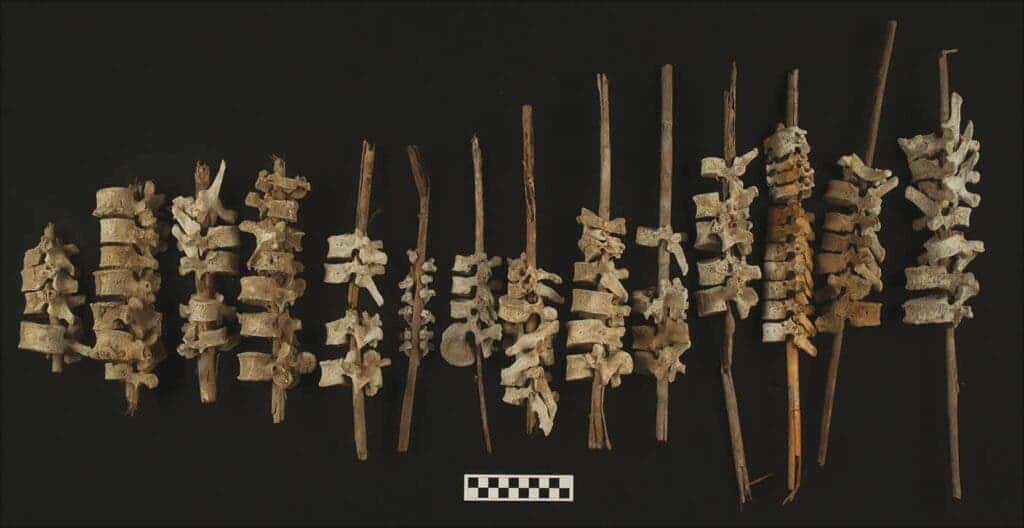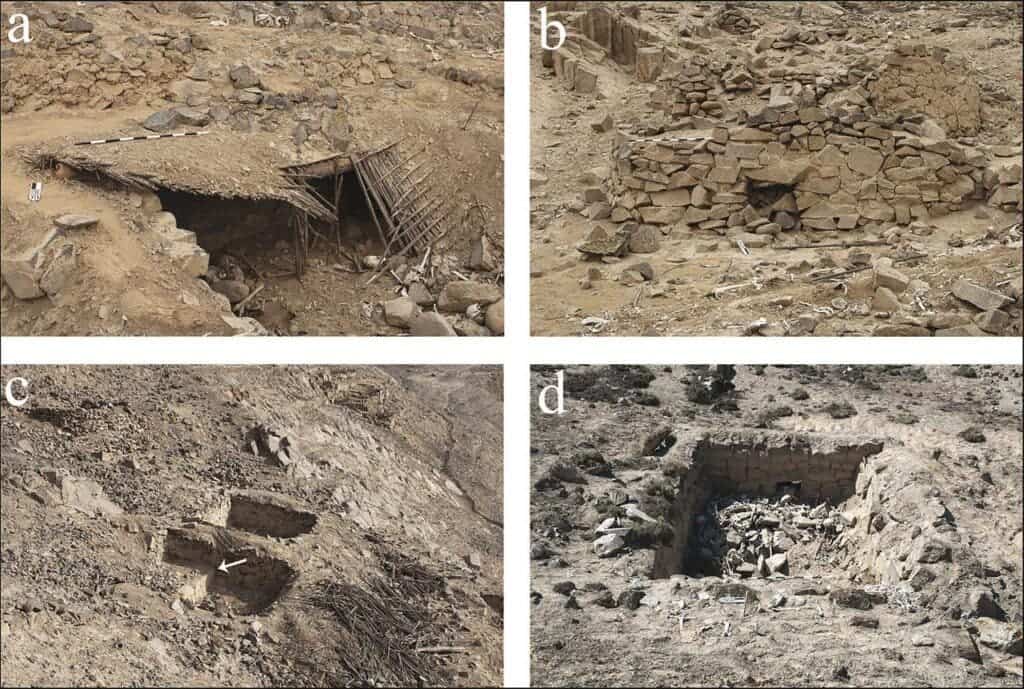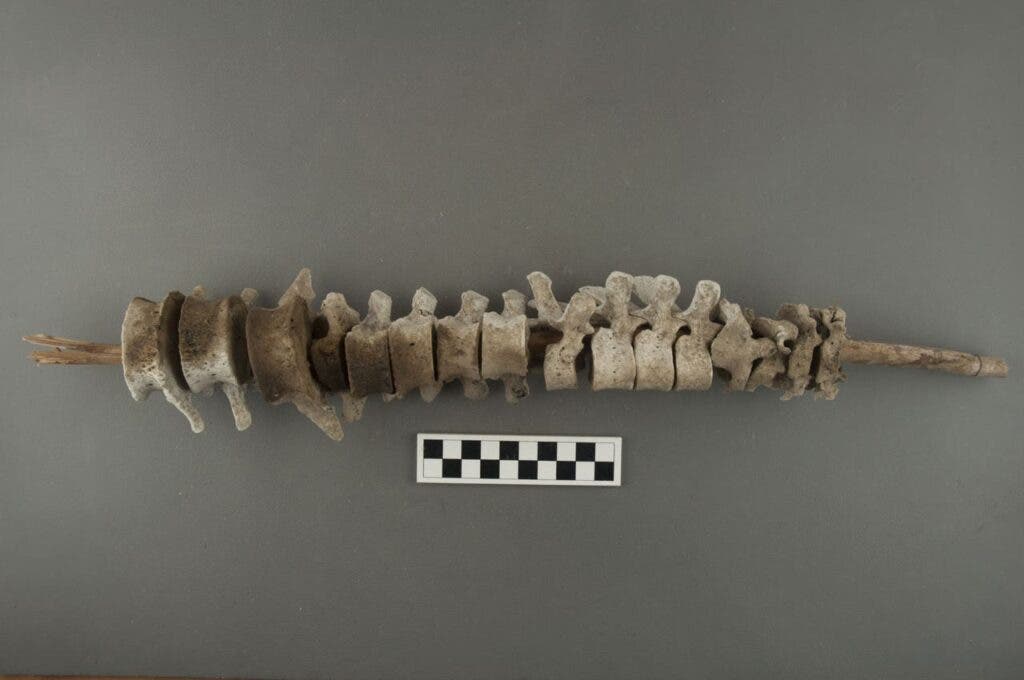
Archeologists were startled to find over 200 reed sticks strung up with human vertebrae while exploring tombs in Peru. These peculiar burial customs, which date from the 16th century, have invited all sorts of speculation as to their purpose. Although at first glance it seems like this manipulation of human remains looks like a desecration of fallen enemies, a new study suggests the opposite. According to archeologists from the UK, Colombia, and the USA, these ‘vertebrae-on-posts’ are a response to tomb destruction performed extensively by Spanish conquistadors during the early colonization of South America – a desperate act by local Andean indigenous communities to salvage the remains of their ancestors.
The odd reed posts threaded with vertebrae were first uncovered in 2012 during an archaeological expedition to Peru’s Chincha Valley, inside the ruins of stone burial chambers called chullpas. Among the team was Jacob Bongers, who at the time was still a graduate student. Over the years, Bongers would return to the site, examining chullpas across the valley, once part of a prosperous nation known as the Chincha Kingdom, before its incorporation into the mighty Inca Empire during the Late Horizon period (after 1400 AD).

Now an archeologist at the Sainsbury Research Unit at the University of East Anglia, Bongers has documented 192 individual examples of vertebrae-on-posts, with bones belonging to both children and adults. One of the sets even had a skull threaded. There is no evidence of cut marks, which suggests the bones were placed on the sticks after the skeletal remains were exposed, and the vertebrae aren’t strung up in their natural order.
At first, the scientists thought that the threaded vertebrae were the object of a bad joke by looters. But as they kept finding more, it became clear there was more to it and a systematic and unique burial practice was unfolding before their eyes. Interviews with locals who had encountered similar burials confirmed the vertebrae-threaded posts weren’t made by looters and are likely very old. Just how old no one could tell them.
In a study published this week in the journal Antiquity, Bongers and international colleagues performed radiocarbon dating of some of the samples, finding they are about 500 years old, dating between 1520 and 1550 C.E. This timeline places the remains into a brutal historical context, when early European colonists were in actively campaigning to obliterate Inca culture, particularly Andean religious practices that were seen as heretical. To Bongers, this context may serve to explain the chullpas reed sticks: remains in an advanced state of decomposition were strung up wooden poles deliberately to transport and store them to other, more remote tombs where they would be spared from the foreigners’ desecration.

The Colonial period was devastating to the Chincha, whose population plummeted from over 30,000 heads of households in 1533 to just 979 households in 1583 through a combination of disease, famine, and murder. Tomb looting was also widespread, as chronicled by Peruvian historian Pedro Cieza de León, who wrote “there was an enormous number of graves in this valley in the hills and wastelands. Many of them were opened by the Spaniards, and they removed large sums of gold”.
“When the Spanish came in and looted these tombs, they are ripping up textile bundles and looking for gold, they are looking for silver,” Bongers told Haaretz. “You can imagine it being a fairly violent act, bodies and body parts are being scattered about.”
The looting was seen as a great transgression, perhaps much greater than in other cultures given the special relationship Andean societies had with their dead. Starting with the second millennium BCE, and perhaps much earlier, cultural traditions in the Andes often involved the removal and modification of parts of dead human bodies. This includes removing the hands from old remains and depositing them elsewhere as offerings, as well as trophies like Nazca heads, drums made from flayed human skins, skulls carved into drinking cups, and more.
It was also common to keep the mummified remains of family members out in the open, from common households to palaces. These open and public tombs invited the community to venerate their ancestors by placing offerings or, on some occasions, parading the remains during festivals.
To European conquistadors and their Judeo-Christian mindset, these were unacceptable spectacles of heresy.
“In this vein, we argue that after chullpas were looted—possibly as part of European campaigns to extirpate Indigenous religious practices—local groups re-entered these graves to assemble disaggregated human remains by threading posts through vertebrae. As looting became widespread and epidemics and famine decimated the Chincha population in the sixteenth century AD, it is possible that communities across the Chincha Valley coordinated to string vertebrae on reeds to reconstruct the dead. This social process may have served as a means of restoring the potency of the formerly corrupted dead,” the authors wrote in their study.
This interpretation is, for the time being, a sort of educated speculation. The researchers hope to uncover more insights using genetic sequencing of remains from tombs where vertebrae strung on posts were found, as well as elsewhere.


